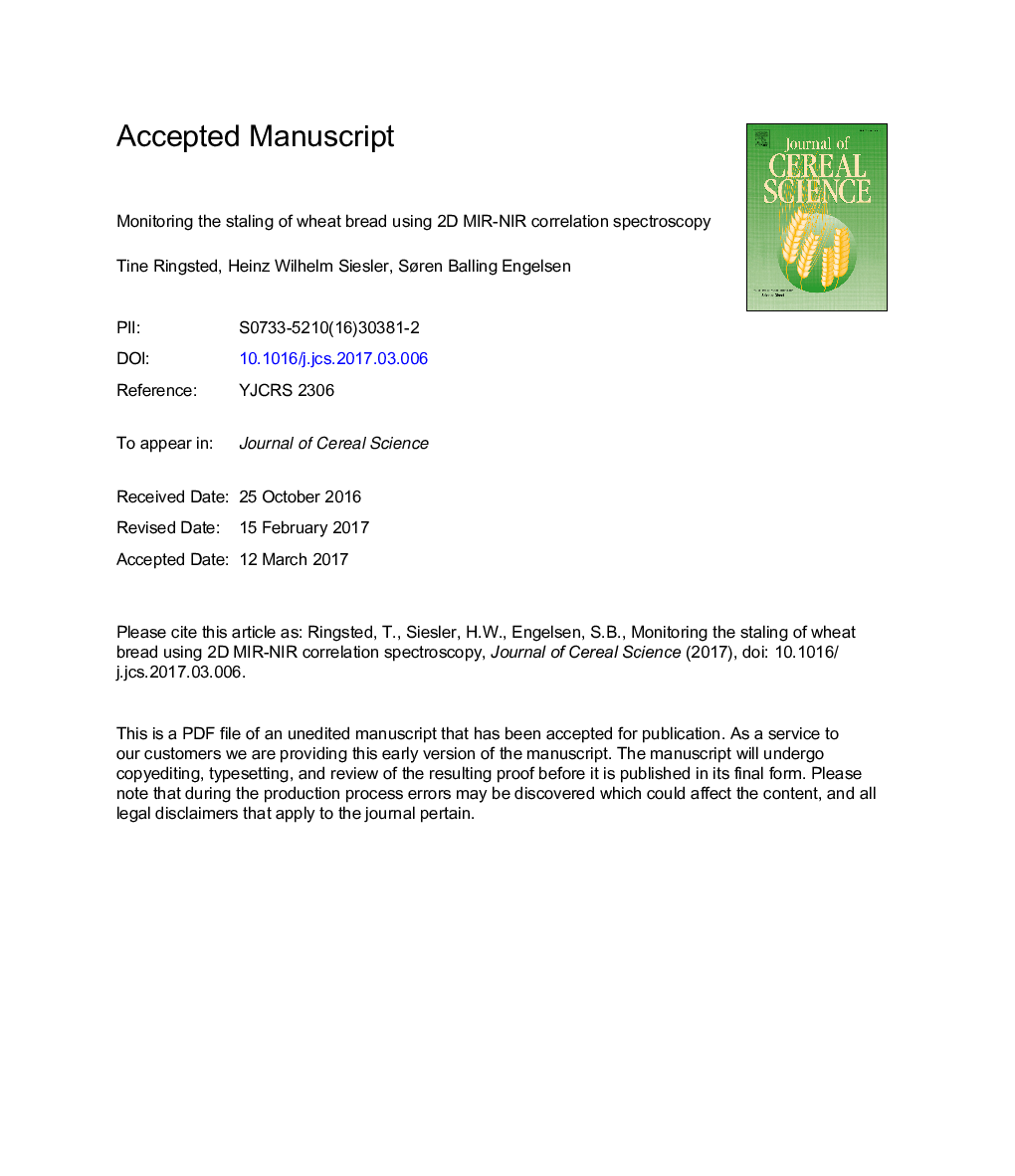| Article ID | Journal | Published Year | Pages | File Type |
|---|---|---|---|---|
| 5762359 | Journal of Cereal Science | 2017 | 21 Pages |
Abstract
Staling of bread is a major source of food waste and efficient monitoring of it can help the food industry in the development of anti-staling recipes. While the staling fingerprint in the mid-infrared region is fairly well established this paper set out to find the most informative parts of the near-infrared spectra with respect to staling. For this purpose, two-dimensional correlation spectroscopy on near- and mid-infrared spectra of wheat bread crumb during aging was employed for the first time. The important mid-infrared absorption band at 1047Â cmâ1 related to amylopectin retrogradation was found to correlate positively with increased bread hardness and to co-vary with the near-infrared band at 910Â nm in the short wavelength region (r2Â =Â 0.88 to hardness), the near-infrared band at 1688Â nm in the 1. overtone region (r2Â =Â 0.97 to hardness) and to the near-infrared band in the long wavelength region at 2288Â nm (r2Â =Â 0.97 to hardness). The spectral information from the first principal component on near-infrared and the first principal component on mid-infrared was found to be highly correlated by a r2Â =Â 0.98. It is demonstrated that the major bread staling processes such as amylopectin retrogradation and water loss can be followed with both near- and mid-infrared spectroscopy.
Related Topics
Life Sciences
Agricultural and Biological Sciences
Agronomy and Crop Science
Authors
Tine Ringsted, Heinz Wilhelm Siesler, Søren Balling Engelsen,
